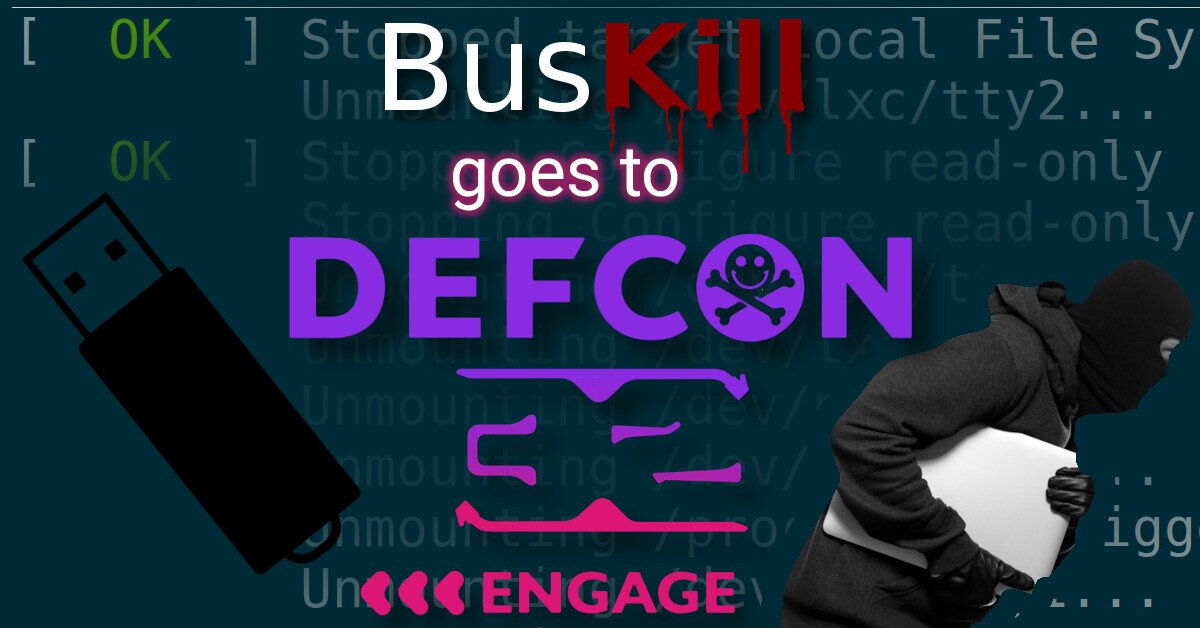This post contains a canary message that’s cryptographically signed by the official BusKill PGP release key
For more information about BusKill canaries, see:
This post contains a canary message that’s cryptographically signed by the official BusKill PGP release key
For more information about BusKill canaries, see:
We’re very happy to share Techlore’s video review of the BusKill Kill Cord.
Can’t see video above? Watch it on PeerTube at makertube.net or on YouTube at youtu.be/Zns0xObbOPM
This post contains a canary message that’s cryptographically signed by the official BusKill PGP release key
For more information about BusKill canaries, see:
🇳🇱 Nederlandse versie van dit artikel
🇫🇷 Version française de cet article
🇩🇪 Deutsche Version dieses Artikels
We’re happy to announce that BusKill cables can now be purchased in-person in Haaksbergen, Netherlands.
The BusKill project has partnered with NovaCustom to make BusKill laptop kill cords available from another brick-and-mortar location in Europe. You can now go to the following location and purchase a BusKill cable with cash or cryptocurrency.
NovaCustom B.V.
Harmoleweg 4
7482 PL Haaksbergen
Netherlands
(only by appointment)
🇬🇧 English version of this article.
🇳🇱 Nederlandse versie van dit artikel
🇩🇪 Deutsche Version dieses Artikels
Nous sommes heureux d’annoncer que les câbles BusKill peuvent désormais être achetés en personne à Haaksbergen, aux Pays-Bas.
🇬🇧 English version of this article.
🇫🇷 Version française de cet article
🇩🇪 Deutsche Version dieses Artikels
We kunnen met trots mededelen dat de BusKill-kabels vanaf nu bij het bedrijf NovaCustom persoonlijk aan te schaffen zijn in Haaksbergen, Nederland.
🇬🇧 English version of this article.
🇳🇱 Nederlandse versie van dit artikel
🇫🇷 Version française de cet article
Mit großem Stolz präsentieren wir unsere neue Zusammenarbeit mit NovaCustom. Ab jetzt können Buskill-Kabel physisch im Büro bei NovaCustom in Haaksbergen (Niederlande) gekauft werden.
In celebration of Bitcoin Black Friday 2024, we’re offering a 10% discount on all BusKill cables sold between Nov 23 to Dec 07.
We’re happy to announce that BusKill is presenting at DEF CON 32.
What: Open Hardware Design for BusKill Cord
When: 2024-08-10 12:00 – 13:45
Where: W303 – Third Floor – LVCC West Hall

Update 2024-09-04 Added slide deck pdf
This post contains a canary message that’s cryptographically signed by the official BusKill PGP release key
For more information about BusKill canaries, see: